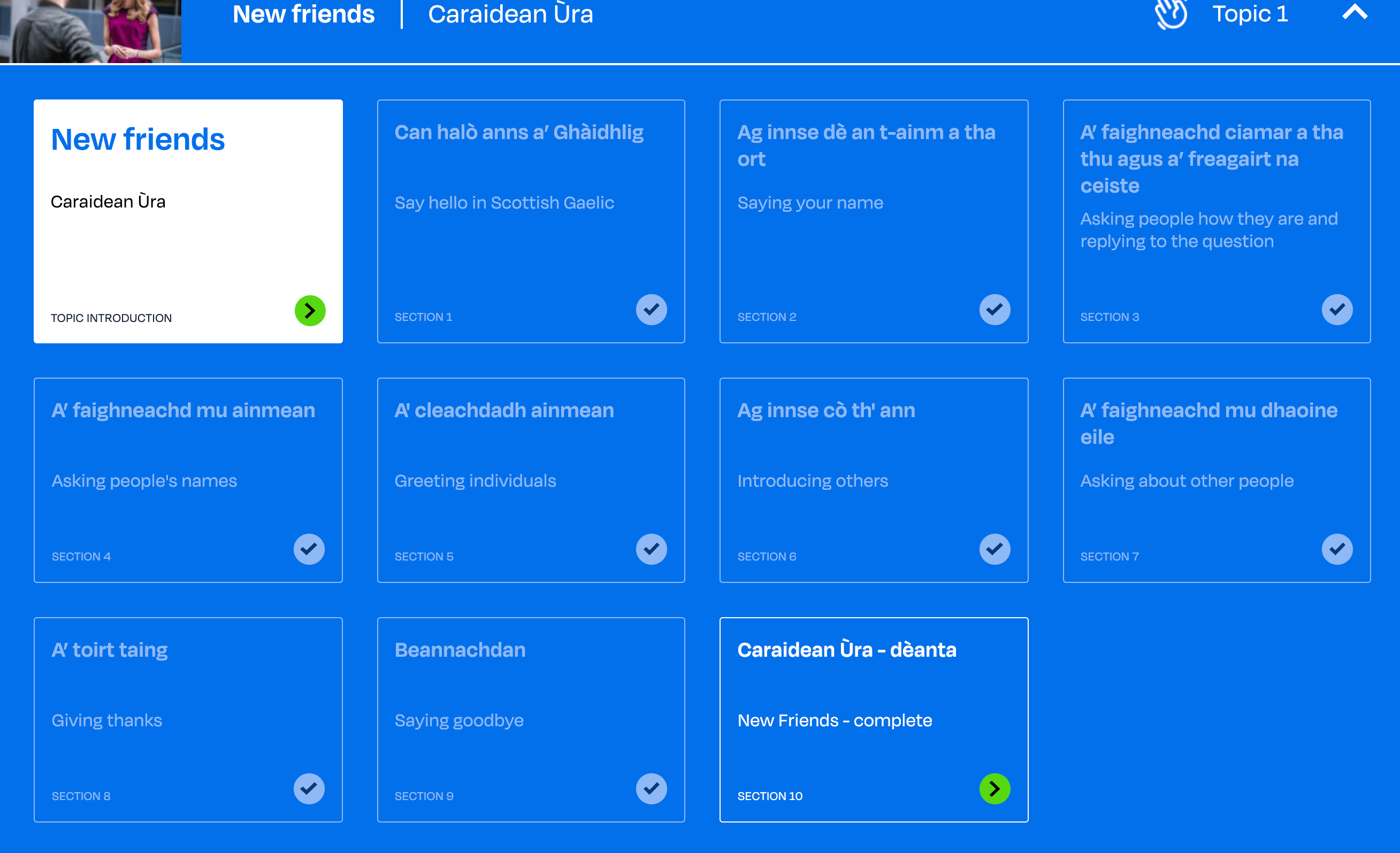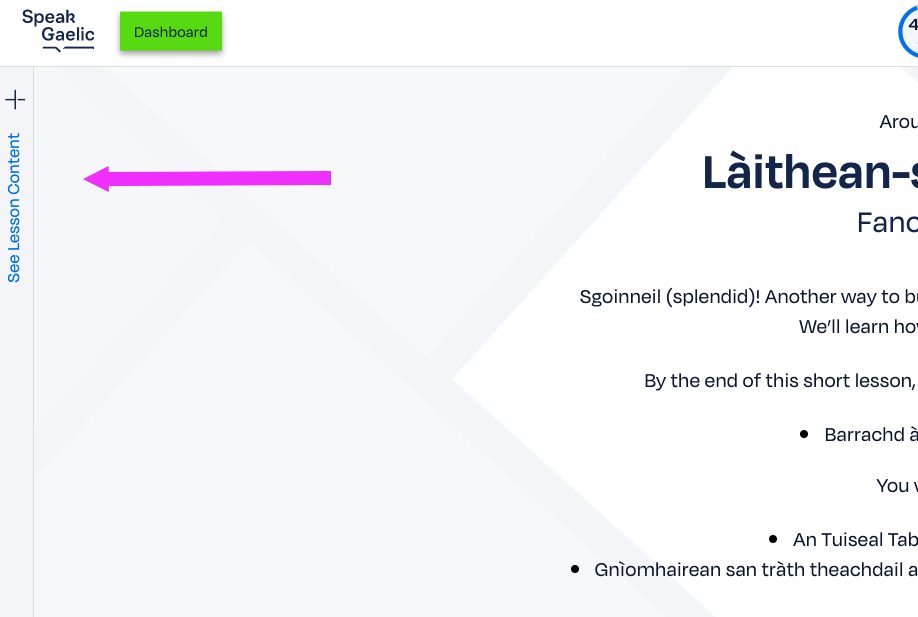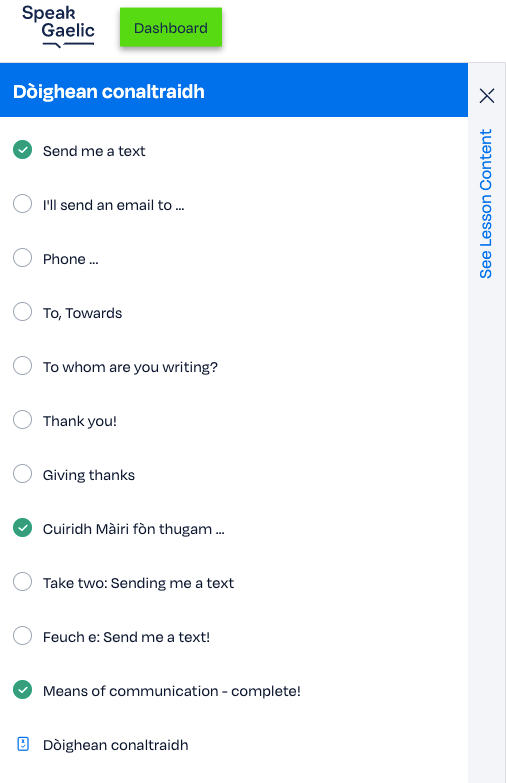Cèilidhean
Ceilidhs
Most people in Scotland know about cèilidhean (ceilidhs) and how important they are to the culture of Scotland. We learned in the A2 course that there are two types of cèilidh: an taigh–cèilidh (the traditional or house cèilidh) and cèilidh dannsa (a cèilidh dance). We normally hear singers or poets at a traditional cèilidh. Everyone needs to be ready and willing to take part in the event. At a cèilidh dance, we hear dance bands playing tunes for dancing and we see people dancing.
deoch an dorais
one for the road
bean an taighe
host(ess), MC
fear an taighe
host, MC
cuirm–chiùil (f)
concert
cuirmean–ciùil (pl)
concerts
loma–làn (adj)
totally full
falamh (adj)
empty
neach–èisteachd (m)
listener/member of the audience
luchd–èisteachd (m)
listeners/audience
The song Fiullaigean (Fiollagan) was made (composed) in about 1875 by Iain Mac a’ Ghobhainn, ‘an Gobha from Iarsiadar in Leòdhas. He made this song for his sister–in–law, Mòr NicChoinnich, Mòr an Tàilleir from Crothair in Beàrnaraigh when Mòr was going to marry Fiullaigean—Fionnlagh MacLeòid from Àrnol.
Saoil, a Mhòr, am pòs thu?
Saoil am pòs thu Fiullaigean?
Saoil, a Mhòr, am pòs thu?
Theireadh gu leòr nach b’ urrainn dhut
https://www.bbc.co.uk/alba/oran/orain/ fiollagan/
You can find this song and more information on the BBC’s Bliadhna nan Òran website.




